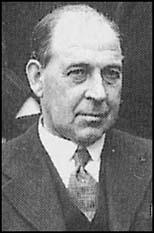John Anderson

John Anderson, the son of a publisher, was born in Edinburgh on 8th July 1882. After studying at Edinburgh University and the University of Leipzig he entered the Colonial Office in 1905.
Anderson was later posted to Ireland where he served as joint undersecretary. In 1922 he was promoted to permanent undersecretary at the Home Office. In 1926 he was chairman of the committee that dealt with the problems caused by the General Strike. In 1932 he was appointed governor of Bengal in India.
After returning to Britain in 1938 Anderson was elected to the House of Commons. In November 1938, Neville Chamberlain placed Anderson in charge of the Air Raid Precautions (ARP). He immediately commissioned the engineer, William Patterson, to design a small and cheap shelter that could be erected in people's gardens.
Within a few months nearly one and a half million of these Anderson Shelters were distributed to people living in areas expected to be bombed by the Luftwaffe. Made from six curved sheets bolted together at the top, with steel plates at either end, and measuring 6ft 6in by 4ft 6in (1.95m by 1.35m) the shelter could accommodate six people. These shelters were half buried in the ground with earth heaped on top. The entrance was protected by a steel shield and an earthen blast wall.
Anderson shelters were given free to poor people. Men who earned more than £5 a week could buy one for £7. Soon after the outbreak of the Second World War in September 1939, over 2 million families had shelters in their garden. By the time of the Blitz this had risen to two and a quarter million.
Anderson joined the War Cabinet in October 1940 as Lord President of the Council. In this post he he organizing civilian and economic resources. He was also responsible for suppressing the Communist Party supporting Daily Worker. In October 1943 he became chancellor of the exchequer where he introduced the PAYE system for income tax payment.
When the Labour Party won the 1945 General Election he left the government. Anderson, who lost his seat in the House of Commons in 1950, was created Viscount Waverley of Westdean in 1952. John Anderson died in London on 4th January 1958.
Primary Sources
(1) Herbert Morrison, An Autobiography (1960)
Being Home Secretary and Minister of Home Security meant that I had in effect two jobs at one and the same time. There were two different organizations and two permanent secretaries. That was fundamentally right but there had to be some 'fitting in'. As there was one Minister that was not very difficult.
The police, for example, were under the Home Office; they had to be used by both departments. So nominally was the fire service but in fact it had to be treated as part of the Ministry of Home Security. One thing I did from the outset, and that was to go out and meet the people, to see things on the ground and talk to humble civil defence workers. I have always held the view that any head of a State department, no matter what it is, should know the public he serves and the work outside and not spend all his time behind a desk reading papers. I visited all the regions.
I also visited our active defences. The three Commands of the R.A.F., the Royal Observer Corps, which did such fine work and should have got more credit, and A-A Command. It was inspiring and useful.
Despite criticism, Sir John Anderson had organized an excellent system and the machine, as such, was in general running well. For example, the principle of Regional Commissioners was very good and the best method of securing co-ordination with and between the local authorities and maintaining civil government should invasion occur. Some newspapers unreasonably moaned about them because if the emergency reached a situation where the commissioners had to take over it was alleged that in effect the United Kingdom was run by twelve dictators if and when war occurred. In fact, the commissioners were co-operators and not dictators.
